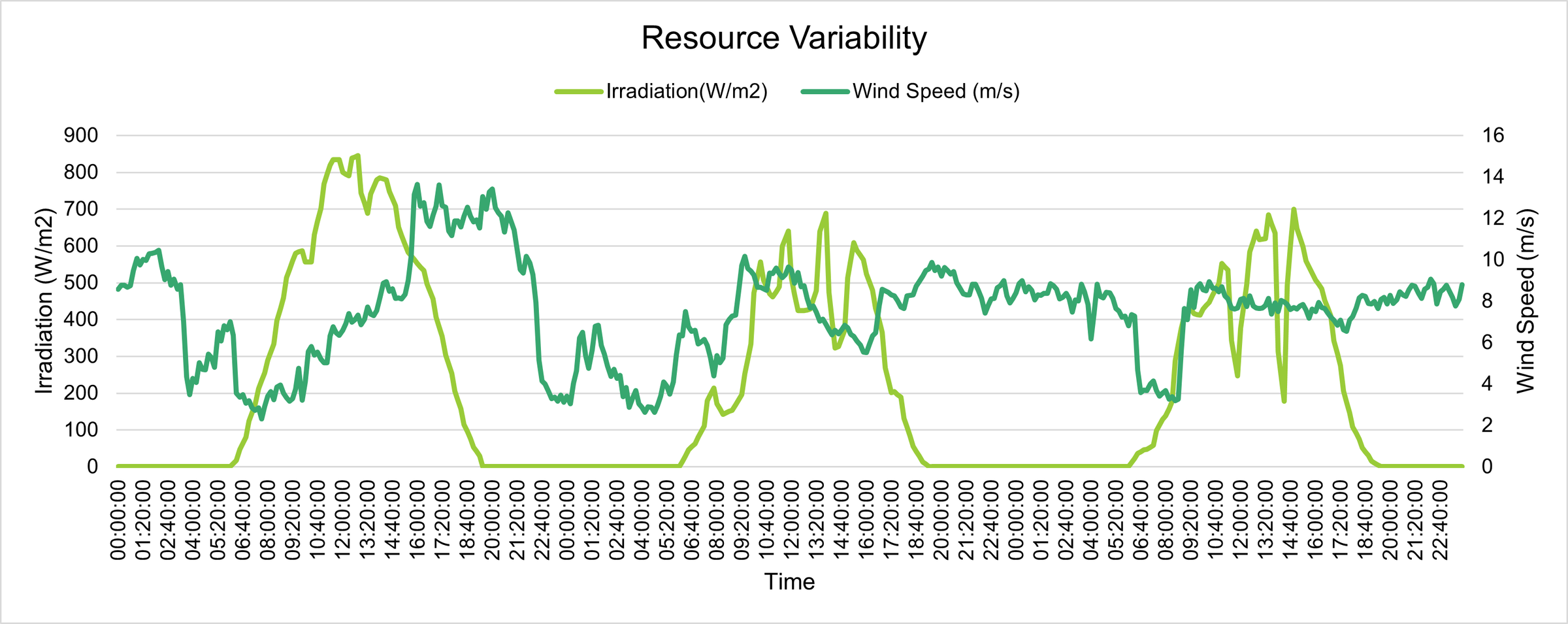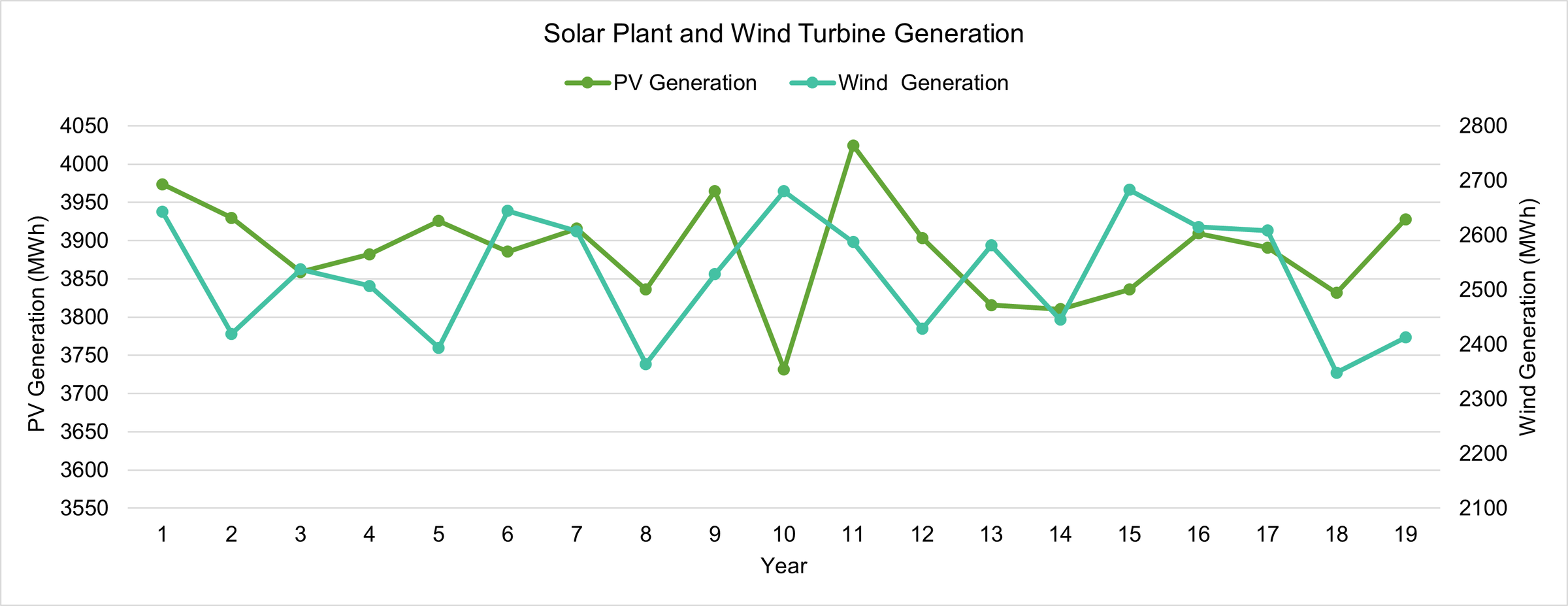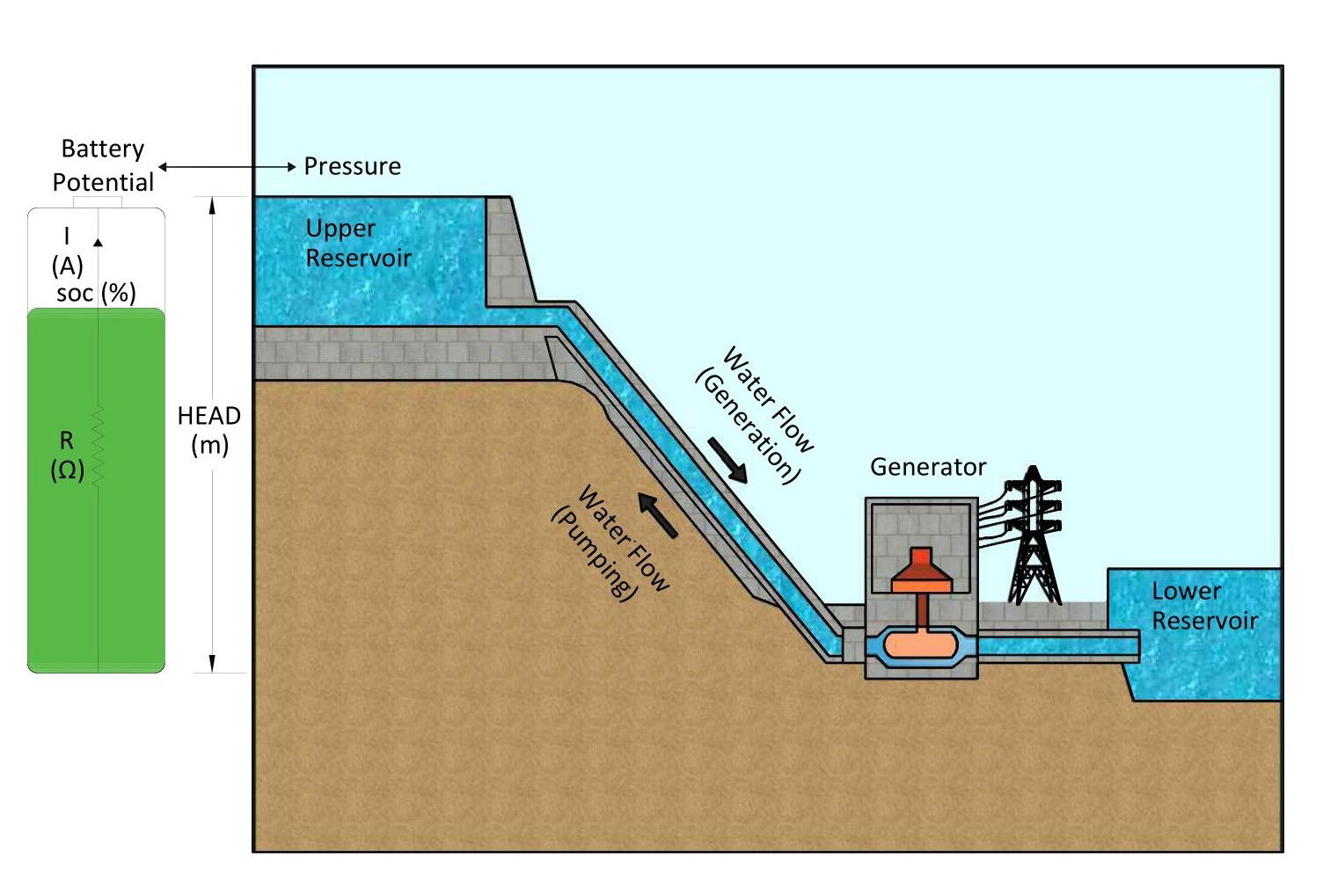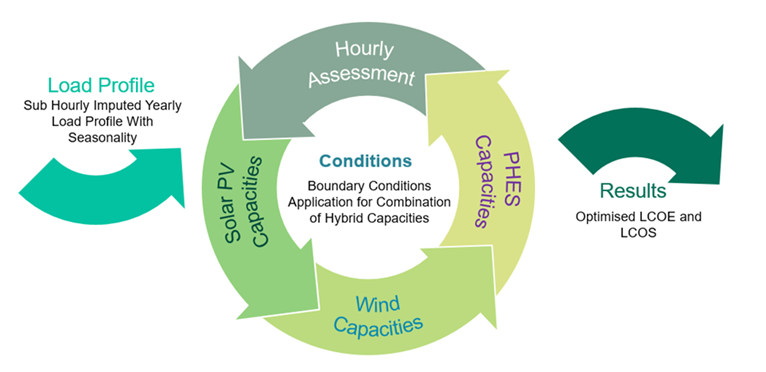Optimization of Pumped Storage Plant (PSP) with Wind-Solar Hybrids
Optimization of Pumped Storage Plant (PSP) with Wind-Solar Hybrids
Renewable energy sources like solar and wind power are crucial for sustainability, but their variable nature can lead to wasted energy and curtailment. Curtailment, which restricts power off-take, remains a persistent challenge for renewable developers. The intra-hour variability of solar and wind energy sources poses challenges for their seamless integration into the grid. Solar energy generation is influenced by factors such as cloud cover and shading, causing fluctuations in output within short time intervals. Similarly, wind energy generation is affected by wind-speed/direction variations, resulting in intermittent power supply.
Figure 1 illustrates the intra hour variability of solar irradiation and wind speed for certain day of the year. The high variability of these renewable sources can strain grid stability, necessitating advanced forecasting, grid management, and energy storage solutions. Accurate prediction of intra-hour variability enables better grid balancing and integration of solar and wind power, minimizing the need for backup generation and enhancing grid reliability. Effective management of this variability is crucial for maximizing renewable energy utilization and ensuring a smooth transition to a cleaner and more sustainable energy system.

The inter-annual variation in solar and wind generation refers to the year-to-year fluctuations in the amount of electricity generated from these renewable sources. This variability is influenced by factors such as weather patterns, seasonal changes, and climate variations. Figure 2 illustrates the inter annual variation of generation from solar and wind for typical plants. The impact of inter-annual variation on grid integration can be significant, as it requires careful management and planning to ensure a reliable and stable electricity supply. Utilities and grid operators need to account for these fluctuations and implement strategies such as diversified renewable portfolios, energy storage systems, and flexible grid management techniques to mitigate the effects of inter-annual variation and maintain grid stability.
To overcome this, energy storage systems are vital, with pumped hydro energy storage being a prominent solution. Pumped hydro storage allows excess renewable energy to be stored and used during periods of high demand. By mitigating curtailment and optimizing energy utilization, pumped hydro storage enhances grid performance and enables higher renewable penetration. Its role in addressing the variability of renewable generation contributes to a more sustainable energy system and fosters the transition to a low-carbon future.

Pumped hydro energy storage involves using excess energy to pump water to a higher elevation, creating potential energy. During times of high demand, this stored water is released, flowing downhill and driving turbines to generate electricity. This method offers several advantages, such as high efficiency, long lifespan, and large-scale storage capacity. Additionally, pumped hydro energy storage can help stabilize the grid by balancing fluctuations in renewable energy generation and demand, contributing to a more reliable and sustainable energy system.

Pumped hydro energy storage can be analogized to a battery model with several key elements. Figure 3 illustrates the analogy between battery and pump hydro energy storage. The potential energy of water in an elevated reservoir represents the voltage of a battery, while the height or head of the water corresponds to the state of charge (SOC) of the battery. The flow rate of water during pumping and generation operations reflects the charging and discharging currents of a battery. Just as there are losses in a battery due to internal resistance, head losses occur in pumped hydro systems due to friction and turbulence in the water flow. Additionally, evaporation of water can be seen as a capacity reduction factor in batteries, similar to how temperature variations impact battery performance. These analogies help us understand the operation, limitations, and characteristics of pumped hydro energy storage systems in relation to battery technologies.
The analysis involves a comprehensive assessment of the electricity system, starting with an hourly load profile that captures the dynamic nature of electricity demand, including seasonal variations and daily fluctuations. The inherent variability of irradiation and wind speed needs to be accounted for in the modeling approach, ensuring accurate assessment of solar and wind energy generation. Specific losses, such as clipping and temperature loss for solar farms, and wake losses for wind farms, are required to be meticulously simulated. This comprehensive assessment allows for project feasibility evaluation and optimization of energy storage systems like pumped hydro storage to tackle variability and curtailment challenges considering the various boundary conditions. Informed decision-making and efficient utilization of renewable energy sources are enabled through such precise modeling techniques.

To assess the long-term performance, the yearly generation from the PHES system is extrapolated to a 25-year period. Figure 4 illustrates the optimization approach adopted for the assessment of hybrid capacities. This projection takes into account crucial factors such as capital expenditure (CAPEX), operational expenditure (OPEX), discount rate, etc. By considering these parameters, metrics such as the levelized cost of energy (LCOE), levelized cost of storage (LCOS), and utilization factors can be calculated, providing valuable insights into the economic viability and efficiency of each combination of solar, wind, and pumped hydro capacity. This comprehensive analysis facilitates informed decision-making by considering multiple factors and optimizing the plant capacity for cost-effectiveness, optimal utilization, and sustainable energy generation.
The utilization factor of pumped hydro storage is crucial for efficient energy utilization. However, non-collocated projects face the risk of under-utilization if the generation-storage-dispatch profile is not accurately planned. This poses threats such as excess curtailment, wasted energy, financial implications, and hindrance to renewable integration. Accurate planning and optimization are vital to mitigate these risks, ensuring optimal utilization and maximizing the benefits of pumped hydro storage.
